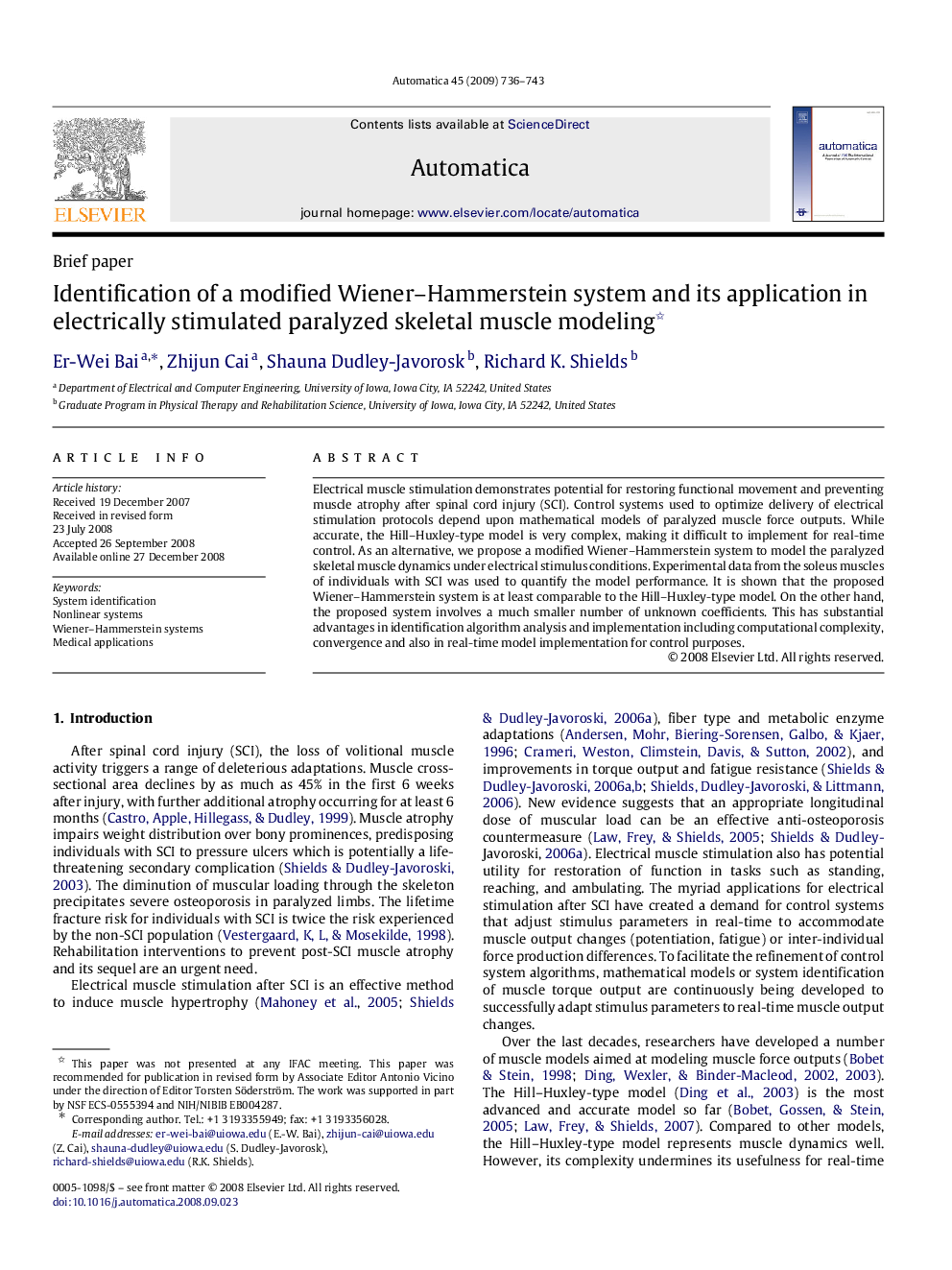| Article ID | Journal | Published Year | Pages | File Type |
|---|---|---|---|---|
| 697534 | Automatica | 2009 | 8 Pages |
Electrical muscle stimulation demonstrates potential for restoring functional movement and preventing muscle atrophy after spinal cord injury (SCI). Control systems used to optimize delivery of electrical stimulation protocols depend upon mathematical models of paralyzed muscle force outputs. While accurate, the Hill–Huxley-type model is very complex, making it difficult to implement for real-time control. As an alternative, we propose a modified Wiener–Hammerstein system to model the paralyzed skeletal muscle dynamics under electrical stimulus conditions. Experimental data from the soleus muscles of individuals with SCI was used to quantify the model performance. It is shown that the proposed Wiener–Hammerstein system is at least comparable to the Hill–Huxley-type model. On the other hand, the proposed system involves a much smaller number of unknown coefficients. This has substantial advantages in identification algorithm analysis and implementation including computational complexity, convergence and also in real-time model implementation for control purposes.
